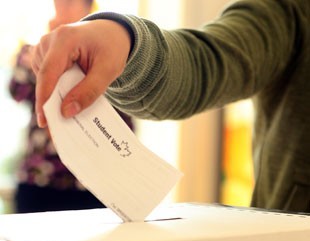Youth participation within the Canadian political sphere is currently experiencing a drought. In the 2011 federal election, the voter turnout for the ages 18-24 was a measly 38.8 per cent, while the 25-34 demographic was at 45.1 per cent, respectively the lowest and second lowest among all age demographics. While some publications claim that poor rates of youth voter turnout are due to apathy, a report by Elections Canada found that access barriers—ranging from being busy with work and school, living away from their home riding, or not knowing where to vote—were the biggest reasons for why youth turnout was so low. Below is a guide to overcoming some of those access barriers to allow eligible voters to participate in the upcoming federal election.
Registering to vote
An individual cannot vote if they are not registered with Elections Canada. Fortunately, over 92 per cent of Canadians are already registered within National Register of Electors, which obtains its information from sources such as the Canada Revenue Agency, Citizenship and Immigration Canada, and provincial driver’s licence agencies. This means that if you have a driver’s licence, a passport, or pay your taxes, you’re most likely registered. If not, you can register to vote online through Elections Canada.
When you arrive at the polling station, you’ll be asked for several options to prove your identity and your primary address. You can show a driver’s licence or a provincial ID card. If you have none of those pieces, you must show two pieces of ID from a long list of options that includes a passport, a birth certificate, a health card, or even a personal cheque. At least one of these pieces of ID must show proof of address.
Where to vote
On Election Day and advanced voting days, polling stations will be open for citizens to cast their ballot for every riding across the country. While the locations of poll stations have not been released yet, you can find out what riding you’re in by simply typing your postal code into Election Canada’s Voter Information Service.
For the first time, Elections Canada is opening offices on university campusees across the country to make it even easier for students to vote. There will be three offices at McGill, one in Carrefour Sherbrooke, one at La-Plaza-Diplomate (Ace Bar), and one at Memorial Hall. At these offices, students can vote regardless of where their riding is. This means that even if your primary address is in British Columbia, your vote will count in your home riding.
When to vote
Election Day is officially on Thursday, Oct. 19, but for students who might be busy that day, there are other options available. Advanced polls are open from Friday Oct. 9 to12, which is conveniently Thanksgiving weekend. They will therefore have the option to vote in their own riding if you are going home for the weekend.
While the campus offices are only open from Oct. 5 to 8, their hours are quite convenient. They operate from 10:00 a.m. to 8:00 p.m., allowing for much flexibility when accommodating students’ schedules.
Other resources
Students at Concordia University have developed a free app called VoteNote, which provides users with all the information they need to vote. Users can identify their riding using GPS functions, see a list of the materials needed to register, and view information about all the running candidates. VoteNote can even set up an Uber to get you to the polling station. If you are unsure for whom you want to vote in this election, you can use CBC’s “Vote Compass” to learn where you sit on the political spectrum. This quiz will ask you a series of questions on a variety of political issues to help determine which political party you side with.
Lastly, student-related issues such as education and affordable housing have not been at the forefront of this election so far. An organization called YouthVote is seeking to change that by pushing political parties to make youth issues a larger priority, which could increase civic participation amongst young people. For students who want to learn more about youth issues and want to help bring them to the forefront of politicians’ minds, getting involved with YouthVote is an excellent start.
This article was corrected on September 15, 2015. The Tribune regrets these errors









